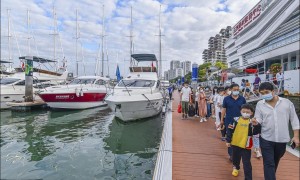Heavy smog has lasted for days in Beijing, triggering public criticism over the municipal government's inaction.
At 8 am Sunday, the air quality index (AQI) at monitoring stations in the city's downtown areas read between 424 and 470 at Level 6, the highest level indicating hazardous pollution, according to the Beijing Municipal Environmental Monitoring Center's website.
Heavy smog has continued for at least three days, and there has been mounting criticism over the inaction of the municipal government.
The business channel of the China Central Television (CCTV) on late Saturday questioned why the government failed to initiate an emergency response under such a smoggy weather.
"Beijing municipal government, don't pretend to be blind taking advantages of the fog," the channel said via its official microblog website at the Twitter-like weibo.com. "The government should not shun its responsibility or turn a blind eye to the smog."
The channel tweeted twice on the matter in five minutes, forwarded by netizens thousands of times as of Sunday morning.
Beijing municipal government passed an emergency response system last October and made it effective the same month. The system requires that traffic be cut with alternate driving days for even- and odd-numbered license plates and schools suspended if a red alert, the highest level for air pollution, is issued. Industrial plants will be closed or told to reduce production if an orange alert, the second highest one, is issued.
However, since the program's effectiveness on October 22, 2013, the government has not initiated the emergency response once, although the public for several times believed the smog was heavy enough for a government response.
The government on late Saturday issued a blue alert for air pollution.
The city adopts a four-tier alert system, using blue, yellow, orange and red to indicate the lowest to the highest level of air pollution.







